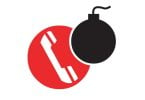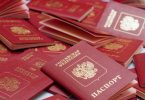As a Jamaica-based journalist, Irina Bruce decided to address the recent issues with Travel Advisories for Jamaica and the Bahamas.
While doing the research, she accidentally uncovered many concerning issues with the U.S. Travel Advisory system.
Not only is it sometimes being misused for political reasons, but it turns out that U.S. Travel Advisories might not work as intended. Instead of protecting US citizens, they risk their health or life.
Irina also uncovered that some representatives of the U.S. Government abused their job position and connections to misinform the State Department and push U.S. Media outlets into publishing dishonest information related to the Travel Advisories to misinform U.S. citizens and manipulate public opinion.
Something happened in Jamaica.
Crime in Jamaica reduced significantly to the point that from the start of the year, Jamaica recorded the lowest number of homicides in 22 years. Not only that, Jamaica’s unemployment rate fell to a record low of 4.2%.In context, it’s better than in some so-called developed countries, like Germany (5.9) or Canada (5.8).
None of this is accidental; it results from what’s been described as “the most remarkable but under-appreciated turnaround stories in economic history.” I live in Jamaica, so I was just waiting for the mainstream media to acknowledge the progress finally.
Jamaica often gets bad press, but the facts are here. What are they going to say now? What is this? I mean seriously. They don’t want to give a pat on the back, fair enough. Jamaica is doing it for Jamaica, but is it such a slap in the face?
Blunt, straightforward lie all over US media.
Really? Well, here is something you might not realize. It wasn’t just a slap in the face of Jamaica or the Bahamas. Accidentally, it was a slap in the face of the US Government.
Travel Advisories are not a joke; you can’t misuse them to manipulate public opinion like that. United Nations guidelines exist regarding how Travel Advisories should be covered in the media.
Exploiting the government system of Travel Advisories to disinform American citizens is not ok, not even if it was done by someone who works for that Government. I won’t speculate who did it, why, or why now.
I don’t care if they get away with it; the State Department should investigate.
But I will expose what they did and how, and my dear audience, I rarely ask you, but please watch this video to the end and then share it all over the internet. Let’s not underestimate the power of social media.
Travel Advisories and the Media
Two separate issues need to be addressed: the system of Travel Advisories itself and the media coverage of Travel Advisories.
We’ll address Jamaica and the Bahamas here. Jamaica, the Bahamas, and parts of Europe are under a travel advisory.
This is an interesting news headline because every country has a travel advisory; there is also a designated country page with detailed information organized into categories. So, all countries are under Travel Advisory.
But I’m sure that’s not the impression people get when reading this headline. This is because this article withholds the context deliberately, but at least it is not lying, unlike the next ones:
Jamaica spike in murders triggers travel warning to Americans visiting Caribbean island nation U.S. urges travelers to reconsider visiting Jamaica amid violence
The crimes have become so pervasive that tourists aren’t even safe in the shelter of their resorts, the [US] embassy said.
They didn’t. The US Embassy never said any of this.
They never claimed that the resorts were unsafe or that there was an increase in crime or violence in Jamaica, and that’s because there isn’t.
There is no spike in murders or any other crime, nothing like that. It’s the opposite, as I have already mentioned at the start.
If we look at the whole year, in 2023, the number of murders reduced by 7%.
So, if the question “Is it safe to travel to Jamaica right now?” – the simple answer “It is safe” – would be an understatement because Jamaica right now is even safer than it has been before.
Statistics and the Media
What I find the most astonishing with this media coverage is that they didn’t just lie, claiming that crime increased when it decreased.
In some cases, they went to the extent of presenting Jamaica’s progress in the fight against crime as a bad thing by distorting the data and taking it out of context. Here is a good example: Jamaica travel warning was issued after 65 murders in just four weeks.
Every life is important, and even one murder is already one more than it should ever be, but this article is bringing up the statistics. Statistically, if Jamaica continues with 65 homicides per month, it will be under 800 (780) per year, which would make Jamaica a country with a very low homicide rate in the Western Hemisphere.
Of course, because readers are not aware of this context, such statements can easily mislead them.
The best part of this article, though, is not the headline; it’s the masterful choice of language:
The State Department issued a stark travel warning …. stark – and it wasn’t a travel warning, it was a travel advisory – these are different things. Cautioning that Jamaica has been rocked by 65 murders this month. rocked
This journalist is aware that the number of homicides in Jamaica has reduced significantly, but just look at how she completely distorts this information and flips it around:
Shockingly, the high murder rate is down from last year — 81 people were killed in the first month of 2023.
Do you see what I mean about the language?
Two weeks later, this very same journalist was covering a story on the tragic event of a mass shooting in the US, and she was not using this language nor bringing up any statistics.
Imagine if she did: The United States was rocked by 656 mass shootings last year; that’s almost two mass shootings per day.
Shockingly, such a high mass shooting rate is… up; it has increased by 240% in the last ten years.
She didn’t do it because it’s inappropriate, yet for some reason, it was ok when she talked about a travel advisory for Jamaica. But here is a question: If crime in Jamaica has decreased and it’s safe to travel, what about this:
The State Department escalated its warning for Jamaica to a Level 3 travel advisory, but they didn’t.
Nobody escalated anything.
This Travel Advisory at Level 3 has been sitting there since the 14th of March 2022. Even the US Embassy in Jamaica admitted that. And guess what? Before that, it had been at Level 4, saying: Do not travel.
That was because of COVID, but bringing it to Level 3 – was de-escalation, so people were encouraged to travel. The most fascinating about this case is that no one’s been paying any attention to that Travel Advisory until suddenly – 2 years later – it’s the news.
U.S. Issues Level 3 Travel Warning for Jamaica: What to Know
Well, the State Department reissues travel Advisories regularly. It’s a routine procedure that happens once or twice yearly for every country.
For example, this is when and how many times travel advisories were reissued for Jamaica. It can be even more for other countries, but the news usually does not cover this. This time, it was different.
The Disinformation Campaign
On the 26th of January 2024, a large MEDIA CAMPAIGN was launched to disinform US citizens and discourage them from traveling to the Caribbean. It first targeted the Bahamas.
The story claimed their Travel Advisory was increased to Level 2, and it wasn’t; it’s been at Level 2 for years. They also made it sound as if Level 2 is a warning, but it’s not, even level 3 is not a warning.
Travel Advisories are not Travel Warnings—these are different things. Most countries, including Denmark, Sweden, and the Bahamas, are at Level 2.
The most crucial point that proves this was a disinformation campaign is that they claimed that the advisories for the Bahamas and Jamaica were reissued due to crime, which is simply not true. The information about crime in the current advisories is identical to the information from the previous advisories.
This is the proof for the Bahamas, and this is the proof for Jamaica.
But before you blame the media, imagine you’re a journalist, and you’re getting a press release from some official source – and that press release also provides instructions on how this story should be published.
What are you going to do? Well, some good journalists checked the information, saw it was false, and didn’t know what to do.
Make a story about a spike in murders in Jamaica. I’m sorry, I’ve checked, they’ve decreased. I don’t care if they’ve decreased, you’re the journalist, work something out.
For example, CNN. Their story coverage was very different from everyone else, with no attempts to make it sensational; they pointed out that the level of travel advisories hasn’t changed.
However, if you analyze how every single media outlet pushed this story, you’ll see that most reports had a similar structure and, in some cases, used the same language:
First, they would start with “a spike in murders” in the “Caribbean island nation,” then mention the spring break for Americans, and then pull out the same two sentences from the middle of the Jamaica Travel Advisory to quote first.
And it’s interesting that most of them chose the same parts of the Travel Advisory to quote and ignored the rest.
The fun part is that, as you’ll see later, “the rest of it” was precisely the important information to report. If you are unaware, this copy-pasting is not typical for American media. The other evidence that this entire campaign was orchestrated is when the stories were published.
The travel advisories were reissued, but for Jamaica, it was on the 23rd of January, while for the Bahamas, it was on the 26th.
But for some reason, the media decided to talk about the Bahamas first, hardly saying anything about Jamaica, and then suddenly, from the 30th of January – tonnes of reports about Jamaica. What exactly were they waiting for?
Oh, you know new Travel Advisories are coming up, do the story on the Bahamas. What about Jamaica? Nope, wait for seven days, and then do it.
When the News ignored the News
Maybe the main goal behind the press release and this media campaign was to inform the US citizens of the new changes.
After all, even though the advisory level remained the same, some changes are not related to crime, but still quite important, and people need to know about them.
Yet, most media outlets said nothing about the changes, like ignored the actual news and focused on the old stuff that’s been there for two years.
There were only a few reports that mentioned something about the changes, but with a short phrase, deliberately distorting the information by popping in a word that wasn’t there:
The U.S. government has raised its travel alert level for Jamaica – they didn’t amid a spate of murders in the Caribbean nation – there wasn’t one urging Americans to reconsider visiting the island “due to crime and [unreliable] medical services.” the travel advisory never claimed that medical services in Jamaica were unreliable.”
It said they could be expensive or ambulance services can be limited in rural communities, which doesn’t imply that medical services are “unreliable.”
It would be incorrect to claim that because medical services in Jamaica are pretty good. So, what were the actual changes in the recent travel advisories? Let’s have a look:
The Bahamas Travel Advisory: Changes
The Advisory for the Bahamas now has new information, warning travelers to be cautious when swimming and engaging in water activities, advising them to check the local weather and marine alerts.
It also says you have to be mindful of sharks, as there have been recent fatal and non-fatal incidents involving sharks.
This is an example of an issue with the Travel Advisory itself. It doesn’t provide any numerical data or any context, such as that statistically, shark attacks are extremely rare.
But Americans reading this travel advisory might think there are too many sharks in the Bahamas, which is dangerous. Let’s go to Florida instead.
And, of course, the State Department doesn’t issue travel advisories for the United States.
So, people might not be aware that while the Bahamas had one shark attack in 2023, Florida had 16, and in general, Florida is the place with the highest number of shark attacks in the world.
This is an example of a situation when, because of the travel advisory, you might make a wrong decision, which in turn might put your health and life at a greater risk.
Jamaica Travel Advisory: Medical Services
As for the changes in the reissued travel advisory for JAMAICA, the situation is strange and confusing. They added this, and it is all related to medical services.
I particularly find this part interesting:
We strongly encourage you to obtain traveler’s insurance, including medical evacuation insurance, before traveling to Jamaica. The Department of State does not pay medical bills, and U.S. Medicare/Medicaid does not apply overseas.
This is extremely useful information, so why have they added it only now? It should have always been part of a Travel Advisory for every country, right?
That’s not the case; Jamaica is the only one with it. Well, here is why:
Remember I said that the State Department publishes a travel advisory for every country, but there is also a designated country page with all the detailed information placed in categories, including safety, security, healthcare information, and so on.
So, let’s take a look at this country profile page for Jamaica and compare it to some other island nation, not even in the Caribbean, let’s take random ones, Fiji and Cabo Verde.
Now open the health section, and you’ll see something quite interesting:
We strongly recommend supplemental insurance to cover medical evacuation. We do not pay medical bills. Be aware that U.S. Medicare/Medicaid does not apply overseas.
So, all “new” information they added to the Jamaica Travel Advisory is not new; it’s always been there, just in the country profile.
But somebody decided to remove it from the country profile and place it directly into the advisory, not for every country, just for Jamaica.
What I find the most interesting is that country-specific healthcare information is pretty much the same for these three countries; they are even using the same words to describe it, literally, here:
Ambulance services are not widely available, and training and availability of emergency responders may be below U.S. standards. They are not equipped with state-of-the-art medical equipment. Injured or seriously ill travelers may prefer to take a taxi or private vehicle.
They copied and pasted all of this information, telling us that Jamaica, Fiji, and Cabo Verde have pretty much the same level of medical care.
Well, according to them, Cabo Verde has slightly more issues with the healthcare system than Jamaica and Fiji, but that’s not a problem. The problem is that Jamaica has a travel advisory that says Level 3:
Reconsider travel due to medical services, while Fiji and Cabo Verde don’t. Their travel advisories are at Level 1.
So, medical services are the same according to the State Department, not me, but here they are saying this is okay. However, in the case of Jamaica, this is not okay to the point that you should reconsider travel.
Some small island nations do not have any healthcare infrastructure on most of their islands, but that’s okay. They are still at level 1, but not Jamaica, a country with over 320+ health centers, 24 public hospitals, numerous private hospitals, and 55 doctors per 100,000 population.
This is country information for Mozambique: Medical facilities are rudimentary, and most medical providers do not speak fluent English.
Frontline health providers are often poorly trained, and medicine shortages are common. Mozambique’s health infrastructure is limited. There are only three doctors per 100,000 people.
I checked there are eight doctors, not three, so I’m not sure how accurate the rest of the State Department Advisory for Mozambique is
But in the world of the State Department information, Jamaica has far better medical services than Mozambique. Yet the travel advisory for Mozambique due to healthcare issues is at level 2, while Jamaica is at level 3.
If you think this doesn’t make any sense… You’re right. It doesn’t.
So I decided to look at their other point: reconsider travel due to crime. Let’s compare Jamaica with Jamaica
Jamaica Travel Advisory (2018) vs Jamaica Travel Advisory (2024)
The system of levels in travel advisories is quite recent, it was introduced in January 2018. The very first travel advisory for Jamaica was at LEVEL 2:
“Exercise increased caution in Jamaica due to crime.”
Today, it is at level 3—reconsider travel due to crime. According to the State Department, it was safer to travel to Jamaica in the beginning of 2018 than in the beginning of 2024.
Now, let’s look at the statistics. In 2023, there were 1393 homicides, and at the end of 2017, there were 1647. In 2017, there was a spike in crime to the point that the Jamaican government even announced a State of Emergency to fight crime, yet the Travel Advisory remained at LEVEL 2.
It was accurate because crime was not and does not usually affect tourists in Jamaica, as you will see in a minute.
But the point is that the State Department is advising that it was okay to travel to Jamaica back then when the crime was higher, but now, when the crime has reduced and there are 15% fewer homicides in the country, you might want to reconsider travel due to crime. It still doesn’t make any sense.
Well, it does. The current Travel Advisory for Jamaica is incorrect, and it’s been like that since 2022, and the reason for that is straightforward. The State Department relied on an inaccurate source.
Travel Advisory and Crime
The US travel advisories for Jamaica have always pointed out that the country has a crime issue, not so much all crime, but homicide rate, and it’s, unfortunately, true; yes, there is progress, but still, the locals are being affected.
However, Travel Advisories are not written for the locals, they are written for American visitors, so how does Jamaican homicide rate that the media likes to highlight all the time, apply to tourists. This is what the State Department used to say about crime in Jamaica:
While the vast majority of crimes occur in impoverished areas, random acts of violence, such as gunfire, may occur anywhere. The primary criminal concern for tourists is becoming a victim of theft.
This information was entirely accurate and relevant for American visitors. But a few years ago, somebody decided to change this information completely, and it’s become irrelevant, inaccurate, and confusing.
For example: “Violent crimes, such as home invasions, armed robberies, sexual assaults, and homicides, are common. Sexual assaults occur frequently, including at all-inclusive resorts.”
What exactly do they mean by “common” and “frequently”? Let’s examine the actual data. The Jamaica Constabulary Force, Ministry of Tourism, and Ministry of Foreign Affairs and Foreign Trade say over 3 million US visitors visited Jamaica in 2023.
Fifty-two criminal incidents, this is the total number of all crimes recorded, violent and nonviolent, that mention American citizens, and important note here: the vast majority of those American citizens were Jamaicans who were involved in some illegal activity.
Out of these crimes, 5 were homicides, all of whom were again Jamaican-Americans who were not in resort areas, and of which 2 were gang-related, 2 were robberies, and 1 was interpersonal conflict.
One hundred thousand people calculate the homicide rate, so in the case of Jamaica, the homicide rate of American visitors is 0.17. And if you look at the homicide rate of American tourists last year, not just any visitors, but specifically people on vacation, it is zero. And that’s what the State Department calls common and frequent.
But as you can see, severe crimes against foreign visitors, especially tourists, are extremely rare in Jamaica. The data also show that other Americans and foreign nationals mainly perpetrated the sex crimes involving tourists noted in the Travel Advisory on vacation, not local Jamaicans.
For some reason, the Travel Advisory doesn’t mention this detail. As a result, people coming to Jamaica with a new partner they’ve just recently met on Tinder would not be aware of that risk.
Living in the “Do Not Travel” Zone
But if you wish to see the most inaccurate sections of this travel advisory, take a look at this long list of “do not travel” locations. This is when I realized that whoever wrote this list a few years ago didn’t know Jamaica very well.
You would expect they do, as a person assigned to make an official report for the State Department, but it seems they don’t have a basic understanding of the country. It’s either that, or they intentionally misinform the State Department.
Which one is it?
Let me show you what I mean: St. James Parish/Montego Bay—Do Not Travel All of Montego Bay on the inland side of the A1 highway and The Queen’s Drive from San San to Harmony Beach Park.
I recently moved to Kingston, but I spent nine years living in Montego Bay, precisely on the inland side of the A1 highway. So, let me share my experience as a foreigner living in the travel zone.
This is A1 highway, it goes all along the north coast of Jamaica. This is the inland area they are discussing, for instance, Ironshore and Coral Gardens.
Just look how terrible these areas are. I mean, mansions with swimming pools and gardens and roads with palm trees. Oh, these middle-class and upper-class communities in Jamaica are full of dangerous retired people and expats who are renting these homes on Airbnb. What are they even thinking? Why are there five-star reviews?
However, there is more to the dangerous inland side of the A1 highway. For example, the Spring Farm community. This is where some Jamaican millionaires happen to live.
The whole community consists of luxurious private villas that most people can only dream of. But no, the travel advisory specifically tells you not to go there. It’s dangerous, don’t you see? They even have a golf club.
Level 4 – do not travel, the same LEVEL OF RISK to Americans as Gaza. According to the State Department, not me. Look, I’m not mocking the travel advisory system. Whoever wrote this nonsense, disinformed the State Department, and made them publish it is the person mocking this system.
Travel Advisories – The Bigger Picture
And I’ve just quoted a few examples from the content, but if we look at the bigger picture, the situation is even more serious.
JAMAICA VS LEVEL 3 countries
Looking at the list of 24 countries currently at Level 3 Travel Advisory. Unlike most of them, Jamaica is a democratic country that is not involved in any armed conflicts with its neighbors and does not suffer from civil unrest, military uprisings, terrorist attacks, international piracy, bombings, random mass shootings, or mass kidnappings.
Not even the US can make this claim.
JAMAICA VS LEVEL 2 countries
The full list of LEVEL 2 countries and according to the State Department, they are safer for the US citizens, but in reality, the risks of harm to Americans in Jamaica are much lower than for instance, in these LEVEL 2 countries: Mexico, Brazil, Dominican Republic, Zimbabwe, Angola, Laos, Djibouti, Eritrea, Republic of the Congo, Sierra Leone, Tajikistan, Cuba.
In several of these destinations, American tourists have been murdered or found dead outside hotels and tourist areas in cartel-related shootings. In others, tourists have caught up in major international or domestic disputes, armed conflicts, or terroristic attacks that have spilled over into tourist areas.
US visitors to Jamaica are not subject to similar risks and harm, but Jamaica is at level 3. Among level 2 and level 1 countries, plenty don’t have such a sophisticated healthcare system as Jamaica does, yet the State Department doesn’t tell Americans to reconsider traveling there.
And this is where you should ask a question, hold on a minute, what’s going on? I’m glad you asked.
What’s Going On?
All travel advisories are issued by the State Department, specifically by the Bureau of Consular Affairs. They are responsible for them, and technically, they write them.
Obviously, these people cannot possibly know everything about every country, so they heavily rely on various sources, including intelligence reports, international statistical data, and reports from the U.S. embassies and consulates worldwide that provide on-the-ground information.
The Travel Advisory for Jamaica clearly shows that one or more of these sources provided the Bureau of Consular Affairs with incorrect information, basically misinforming them.
Whether this was done by accident or intentionally, whether they had justified reasons to do so or not, I don’t know, and I’m not going to speculate.
What’s important, though, is the consequences of such actions. You see, there have been cases of travel advisories being used as a political tool to influence tourism-dependent countries, more on this in the travel advisory guide video, but I don’t think the State Department would have misused travel advisories for political influence on Jamaica.
Not because it says so on their website but because it goes against the interests of the United States. I don’t want to go into geo politics or any kind of politics, but it’s just simple maths.
Jamaica’s economy heavily depends on tourism, with most tourists coming from the United States.
If the travel advisory is misused to deter American visitors, the Jamaican economy will suffer and will have to focus on other industries to survive, such as bauxite mining. And you know that most of the bauxite industry in Jamaica belongs to Russia.
So, I seriously doubt the United States is interested in this course of events. I’m not sure if the person or people orchestrating this media campaign against Jamaica took a moment to think about this.
Look, if there were indeed some serious issues affecting the safety and security of American visitors in Jamaica, it would have made sense to change the travel advisory and run this media campaign to warn people. The risks would then be justified. But there are no issues; their entire story is made up.
What were they thinking that no one would notice or dare to speak against this?
Travel Advisory and Politics.
The Governments of Jamaica and the Bahamas have been pushing back against these advisories from the start. The Jamaican Government was also asking the State Department to revise its advisory because it is damaging to the country’s economy.
However, it looks like the problem is way bigger than that. This travel advisory is damaging not only for Jamaica but also for the State Department and American citizens.
Suppose the safety and security of Americans abroad is their priority. How can they seriously advise their citizens that the risk of traveling to Colombia or Israel is the same as the risk of traveling to an all-inclusive resort in Jamaica?
What we are witnessing today is one of the most embarrassing moments in the history of the State Department Travel Advisory system because not only does this advisory misinform and misguide American citizens who wish to travel to Jamaica, but it also undermines the entire system of Travel Advisories for all other countries, basically does the opposite of what it is designed to do.
Who is the person or people responsible for putting the State Department in such a position?
(eTN): Visiting Jamaica is Safe Again: US Travel Advisory Exposed | re-post license | post content























